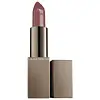What's inside
What's inside
 Key Ingredients
Key Ingredients

 Benefits
Benefits

 Concerns
Concerns

 Ingredients Side-by-side
Ingredients Side-by-side

Cetyl Dimethicone
EmollientDi-C12-13 Alkyl Tartrate
EmollientOctyldodecanol
EmollientC30-45 Alkyl Dimethicone
Skin ConditioningPolyethylene
AbrasiveCaprylic/Capric Triglyceride
MaskingMicrocrystalline Wax
Emulsion StabilisingDicalcium Phosphate
AbrasiveStearalkonium Bentonite
Gel FormingMica
Cosmetic ColorantTocopheryl Acetate
AntioxidantCamellia Oleifera Seed Oil
Skin ConditioningSimmondsia Chinensis Seed Oil
EmollientPadina Pavonica Thallus Extract
Skin ConditioningPentaerythrityl Tetra-Di-T-Butyl Hydroxyhydrocinnamate
AntioxidantPropylene Carbonate
SolventTalc
AbrasiveCaprylyl Methicone
Skin ConditioningSynthetic Fluorphlogopite
Tin Oxide
AbrasiveTitanium Dioxide
Cosmetic ColorantCI 42090
Cosmetic ColorantCI 77491
Cosmetic ColorantCI 77492
Cosmetic ColorantCI 15850
Cosmetic ColorantCI 45410
Cosmetic ColorantZinc Oxide
Cosmetic ColorantCetyl Dimethicone, Di-C12-13 Alkyl Tartrate, Octyldodecanol, C30-45 Alkyl Dimethicone, Polyethylene, Caprylic/Capric Triglyceride, Microcrystalline Wax, Dicalcium Phosphate, Stearalkonium Bentonite, Mica, Tocopheryl Acetate, Camellia Oleifera Seed Oil, Simmondsia Chinensis Seed Oil, Padina Pavonica Thallus Extract, Pentaerythrityl Tetra-Di-T-Butyl Hydroxyhydrocinnamate, Propylene Carbonate, Talc, Caprylyl Methicone, Synthetic Fluorphlogopite, Tin Oxide, Titanium Dioxide, CI 42090, CI 77491, CI 77492, CI 15850, CI 45410, Zinc Oxide
Octyldodecanol
EmollientRicinus Communis Seed Oil
MaskingCandelilla Cera
EmollientBis-Diglyceryl Polyacyladipate-2
EmollientLimnanthes Alba Seed Oil
Skin ConditioningButyrospermum Parkii Butter
Skin ConditioningOryza Sativa Bran Cera
Skin ConditioningCaprylyl Glycol
EmollientSimmondsia Chinensis Seed Oil
EmollientPersea Gratissima Oil
Skin ConditioningTocopheryl Acetate
AntioxidantCI 77891
Cosmetic ColorantCI 77491
Cosmetic ColorantCI 77492
Cosmetic ColorantCI 77499
Cosmetic ColorantCI 15850
Cosmetic ColorantCI 19140
Cosmetic ColorantCI 45410
Cosmetic ColorantCI 42090
Cosmetic ColorantOctyldodecanol, Ricinus Communis Seed Oil, Candelilla Cera, Bis-Diglyceryl Polyacyladipate-2, Limnanthes Alba Seed Oil, Butyrospermum Parkii Butter, Oryza Sativa Bran Cera, Caprylyl Glycol, Simmondsia Chinensis Seed Oil, Persea Gratissima Oil, Tocopheryl Acetate, CI 77891, CI 77491, CI 77492, CI 77499, CI 15850, CI 19140, CI 45410, CI 42090
Ingredients Explained
These ingredients are found in both products.
Ingredients higher up in an ingredient list are typically present in a larger amount.
Ci 15850 is the pigment color red. It is an azo dye and created synthetically.
Azo dyes need to be thoroughly purified before use. This allows them to be more stable and longer-lasting.
This ingredient is common in foundations, lipsticks, and blushes. This color is described as brown/orangey red.
It has many secondary names such as Red 6 and Red 7. According to a manufacturer, Red 6 usually contains aluminum.
Learn more about CI 15850Ci 42090 is a synthetic dye created from petroleum. It is used to give a bright blue color to cosmetics, medicine, and food.
CI 45410 is a synthetic red-pigment and dye.
It often goes by both Red 28 or Red 27; manufacturers label both ingredients as CI 45410.
This dye is commonly found in makeup because it imparts a vivid color. Some types of this dye change color based on pH level and interaction with moisture:
Your skin has a natural pH of around 4.5 - 5.5.
According to the FDA, CI 45410 is not permitted for use in eye products.
Red 27 is a flourescein dye and commonly used as a fluorescent tracer in medicine.
Learn more about CI 45410Ci 77491 is also hydrated iron III oxide. It's sole purpose is to give a red/pink hue to products.
Iron III oxides are classified as inorganic chemicals for coloring.
Synthetically created Ci 77491 is considered safer than those naturally found. This is because the synthetically created version may contain less impurities. Iron oxides are generally non-toxic and non-allergenic.
Learn more about CI 77491Ci 77492 is also hydrated iron III oxide. It's sole purpose is to give a yellow hue to products.
Iron III oxides are classified as inorganic chemicals for coloring.
Synthetically created Ci 77492 is considered safer than those naturally found. This is because the synthetically created version may contain less impurities. Iron oxides are generally non-toxic and non-allergenic.
Learn more about CI 77492Octyldodecanol is a fatty alcohol. It is primarily used to enhance the texture of products.
As an emulsifier, Octyldodecanol helps prevent the oils and waters from separating. It also prevents ingredients from creating foam when shaken.
Octyldodecanol is created by reducing fatty acid to an alcohol.
Due to its high molecular weight, it does not get absorbed into the skin.
Learn more about OctyldodecanolThis oil comes from the seeds of the desert shrub called Jojoba. It is more commonly known as jojoba oil, a non-comedogenic oil.
Jojoba oil does not contain fragrance and has many fatty-acids, making it a great soothing ingredient.
It also contains Vitamin E, a great moisturizing ingredient. Vitamin E is also an antioxidant and protects your skin against oxidative damage.
This ingredient humectant properties, meaning it helps draw moisture from the air. This helps keep your skin hydrated.
While jojoba has antibacterial properties, it is only able to kill some strains of bacteria.
Studies also show it helps in wound healing. In fact, Indigenous cultures have used jojoba as a moisturizer and to help treat burns for centuries.
Fun fact: Jojoba oil similar to natural human skin sebum, so it has a great effect on dry skin. It is also promising with helping to regulate sebum production.
Due to its fatty acid content, Jojoba oil may not be fungal acne safe. We recommend speaking with a professional if you have any concerns.
Learn more about Simmondsia Chinensis Seed OilTocopheryl Acetate is AKA Vitamin E. It is an antioxidant and protects your skin from free radicals. Free radicals damage the skin by breaking down collagen.
One study found using Tocopheryl Acetate with Vitamin C decreased the number of sunburned cells.
Tocopheryl Acetate is commonly found in both skincare and dietary supplements.
Learn more about Tocopheryl Acetate